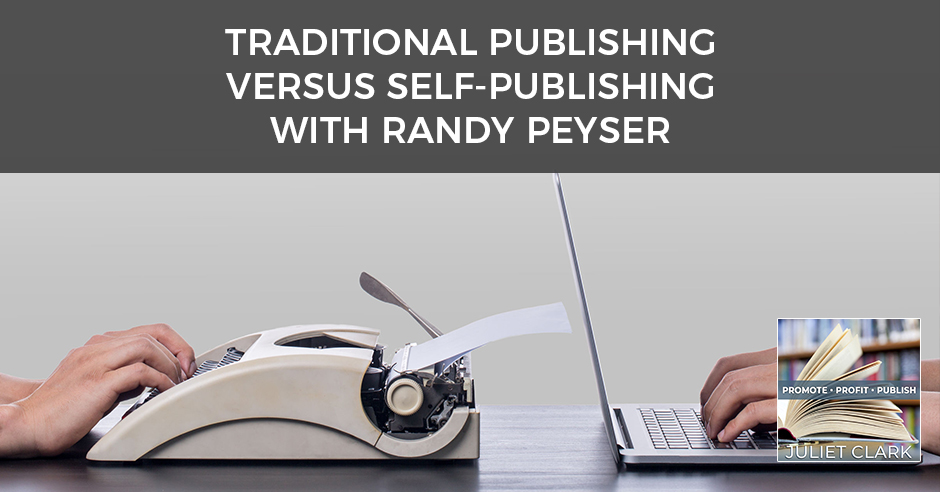
We all know that traditional publishing has a little bit more oomph behind the credibility than going through a self-publishing company. Randy Peyser, CEO of Author One Stop, works with authors who want to get their books published traditionally. Randy is a publishing coach who pitches books to agents in publishing after her company edits and ghostwrites the book. She talks about traditional publishing, building your platform, launching a campaign, as well as why you should never self-publish first.
—
Watch the episode here:
Listen to the podcast here:
Traditional Publishing Versus Self-Publishing with Randy Peyser
We have Randy Peyser. I am a CEO Space member with Randy so I get to pick her brain often. I see her a couple times a year. I’m excited that you guys are going to get to pick her brain a little bit about traditional publishing. She is a publishing coach who pitches books to agents in publishing after her company edits and ghostwrites the book. Her company is called Author One Stop and she works with authors who want to get their books published traditionally, which we all know has a little bit more oomph behind the credibility than going through a self-publishing company. Welcome, Randy. I’m pleased to have you here.
Thank you so much, Juliet.
You have a lot of books being published.
I have five books that are coming out. I’m excited about each of them. They’re all in different genres and they’re all for first-time authors. These are all books that are coming out through traditional publishers. For example, I have one that’s coming out that’s called Great Monday. There were four publishing deals from different publishers offered in this book. I sold it to McGraw-Hill for $15,000 advance. It’s a book on company culture. That’s a business book coming out. I have a paranormal fiction based on a true story called Red Mittens and I’m keeping my double fingers crossed that this book goes to The New York Times list because it is superb. I sold this book to a publisher in one week and it’s a publisher who did a deal with Sophie Turner from Game of Thrones. Sophie is going to star in and direct a movie based on another one of this publisher’s books. This particular fiction project is one step away from a potential movie deal as well.
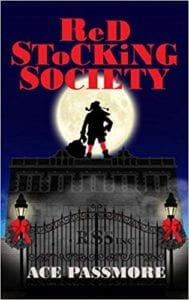
Red Stocking Society
I have a gift book that’s coming out called Life in A Word by a Hollywood actor. He takes all these words like trust, hope, love, poverty, all different kinds of words. He writes an incredible short story for each one to define what that word is. The ending has a twist to it that you don’t see coming. I have a mind-body-spirit book coming out called Structural Integration And Energy Medicine. That one is for anyone who is a bodyworker. It’s about energetic work from Ida Rolf for people who are into Rolfing. It’s information that’s never been revealed before. That’s exciting too for anybody in the body workspace. Lastly, I have a middle-grade reader and this book is really superb, a super holiday fun read. A great gift book for the holidays and it’s called Red Stocking Society. The writer for this book is the top critical care cardiologist in the country, but he writes stories for kids and teens at night. That’s what he does for fun and all of his books are becoming international award-winning screenplays. I’m keeping my fingers crossed that Red Stocking Society might get picked up for the film as well.
You and I talk at CEO Space all the time. People will probably wonder, “Why wouldn’t I go to a literary agent? Why wouldn’t I go to the publisher direct?” You shared with me that literary agents receive over 1,500 manuscripts a month and that publishers receive over 10,000 a year. What is the secret? How are you getting people?
It’s my job to get your manuscript to the top of that pile. This is my secret sauce to doing it and there are many steps in my secret sauce. One of the major steps is that I have relationships built. We all know that relationship marketing is the key to almost everything we do. How do you know I can trust people? I have many years of connections with these agents and publishers. This is the difference that I’m able to make for people. I had a top agent who told me she’s getting inundated with email queries every single day, 100 new queries coming in. She can’t keep up with them. She said, “Randy when you have a project for me, text me.” She’s not the only one, so I’m able to text agents. I’m able to text agents and publishers as well and say, “I’ve got a hot project for you. Be on the lookout for it. In fact, I’m going to be doing it with two projects within the next week. I’m going to be doing that exact same thing.”
How long does it take from the time you sell a book to publish it?
Different publishers have different production schedules. One of the things that happen is that if a publisher is interested in a book, their sales team is going to contact Barnes & Noble and find out if the Barnes & Noble book buyers are interested in that book. It’s a whole process. I’ll give you an example. In 2017, I sent out queries for six books in July. I heard back from eleven publishers offering contracts on those six books in October and it came in like this flood. We’re looking at July, August, September, October, basically a three to four-month cycle before I’m hearing back because it’s not one person making a decision. When I’m pitching a book, I’m typically pitching it directly and sending it to a person who is an acquisitions editor. That person in acquisitions has to read that book proposal, read that manuscript or parts of it, fall in love with it, present it to their team of other editors. Let’s say they have fifteen manuscripts or more that they’re considering for that publishing cycle, which might be quarterly, half a year or yearly depending on the size of the publisher. They’re comparing all of these different books to see which ones they think are going to make the most money for them because that’s their bottom line.
Relationship marketing is the key to almost everything we do. Click To TweetThey fall in love with the content then it goes to a marketing department. The marketing department, that’s when they’re going to be looking at trends. What’s selling now and selling well? Where are the trends leading to? I’ll give you an example. Penguin Random House has said, “For the next few years, no sci-fi.” They’re not interested in it. They’re interested in #MeToo books. #MeToo is trending. There’s a little edge with the #MeToo books. I went to a conference where there were 400 writers and I would say 395 of them were women writing their #MeToo or abused story. That market is glutted. In order to sell a #MeToo book, there needs to be an incredibly unique angle if you’re not very visible in the media already. I’m giving you an example of the timelines. It takes time. What comes in first is not a contract. When a publisher is interested in a book, they come back to me after I’ve been doing my follow-ups with them. They come back with an offer and an offer is basically the size of the advance plus the general terms for royalties. Once an author says yes, they’re interested. They’re willing to accept that offer.
It goes back to the publisher and it might take a couple of weeks or even longer before the actual contract comes in. I sold a book like this and we’ve been waiting. The author has been nervous. She’s texting me, “Where’s my contract?” I said, “Hold on. This is the way publishers work. Sometimes it’s taken even up to three to six weeks before the actual contract comes in.” Once the publisher says yes to the book, “The contract has been redlined. We’ve approved it. It’s signed. It’s ready to go,” then it’s in the publisher’s hands. It’s usually going to take a year before that book comes out, maybe a year and a half. A lot of mind-body-spirit people, the first thing they’ll say to me are, “I want Hay House.” Hay House has a two-year production cycle. That’s a really long publishing cycle. What I tell people is, “Would it be okay if I got your book on the desk of the publisher of The Secret? Would that be okay?” “I think so, as well as other mind, body, spirit publishers.” People have to be aware that there’s a timing issue. If speed to market is important to you, then self-publish.
What is the one thing to not do if you’re serious about traditional publishing and getting a publishing contract?
Do not self-publish first please. I beg of you, don’t do that. Here’s the reason why. I get a lot of people who come to me, they self-publish their books. Every single agent, every single publisher, I’m going to tell you the questions they will ask me for a self-published book. I have sold two of them in the past, but it is really hard. This is the reason why. The first thing they’re going to say to me is, “When did this book come out?” The next thing they’re going to say to me is, “How many copies have sold?” They’re also going to look up those numbers themselves. They’re going to come back and say, “There were too few copies sold. We’re not interested. You’re a bad investment for us.” If you sell a lot, this happened another time for me. I had a person who already sold 32,000 copies of a book. That’s a strong number. The publisher came back and said, “Who does he have left to sell it to?” The numbers weren’t there that a publisher wants to see. That deal got lost. It’s really hard to sell a book that’s been self-published.

Traditional Publishing: One of the big keys to sales for your book is having titles as subject matter that is outcome-driven.
When people come to us with their self-published books, they don’t quite get that you can see how many books have been sold. I can see how many books have been sold. You can see how many books have been sold. Traditional publishers can. One of the things that we’ve come up against is that one of our good friends, we both know her from CEO Space, has something called TVGuestpert. She has a workshop that people come into and they learn how to do television interviews and how to present themselves on television. One of the things she told me that happens over and over is that people come in and they tell the producers on this practice day that they have an international bestseller. The producers laugh at them because they’ll say, “Is it Amazon? In Amazon, you can have three copies and be an Amazon bestseller.” People are not impressed by them anymore. What you’re talking about here is the credible bestseller list like USA Today, Wall Street Journal.
Even The New York Times is a manipulated list. Their algorithms change. I even heard that it’s not only based on sales, but it’s also based on distribution numbers. There are all these different components and there are experts who I can refer people to who specialize in that as well. One of the things you’re bringing up has to do with real numbers. The two components that really sell books are having great content, I’m talking about nonfiction and you’re bringing something new to a conversation that’s already happening. Every year when I go back to that BookExpo, I hear a certain phrase. I’ll hear it from different publishers and I’m going to tell you the phrase that I heard in 2018. This is one of the big keys to sales for your book. Publishers are looking for titles as subject matter that is outcome-driven. The publisher gave an example. She said, “Acupressure for Anxiety.” It was that simple. They were looking for something outcome-driven for anxiety.
I’ve sold a number of books related to stress, one was called Adrenaline Nation. It wound up in airport bookstores around the country. Another one from a CEO Space member, Lauren Miller, I sold 5 Minutes to Stress Relief. Anxiety, it’s one of those perpetual topics that will always sell. Publishers are looking for outcome-driven titles and content. If somebody is in a Barnes & Noble and all they can see is the title from the spine, how do they know they need your book? They can’t wait to page five or ten or twenty to find out what your book is about, what you’re going to do for them. Position in the title, it’s the easiest way to get a sale. That’s about content. Let’s talk about the business of publishing. It’s this formula where you’ve got to have great content, but you’ve also had to have numbers. Let’s talk about numbers. What numbers are publishers looking for? I had an agent several years ago and he sold 35 books that year and every single year. He’s a prolific seller of books. Every single business book he’s ever taken on that I pitched to him, which has been many, he has sold every single one. This is a guy who’s always on top of the market. He always knows what’s selling and he told me, “Randy, it’s all come down to publishers sitting with their calculators. They’re comparing one person’s numbers to another. Who’s got the best numbers?”
For example, you’re working with people to help them build that platform and platform is the big buzzword in publishing. The platform eyeballs. For me, my first book, Crappy to Happy, it was four years of pitching that book at publishers. This was back in 1998 and ‘99, back in that time period. I started doing a one-woman show called Comic Intervention for Closet Visionaries and Almost-Manifesters: A One-Woman Show EXCEPT For The Other People. I started weaving in some of the stories in my book. When I go back to that BookExpo America event, all of a sudden they see that I’m doing a one-woman show and I had a book contract in two weeks. Publishers loved that I had eyeballs. Building the platform is critical and one of the things that I also help people do as well easily is leverage other people’s lists. You don’t have to have the largest list in the world, but other people you know may. Think of those ten big mouth people that you know who have large lists, a short letter for you and be part of your launch campaign partners.
Platform is the big buzzword in publishing. Click To TweetPlease don’t be intimidated to that. A lot of people can go into a lot of fears like, “My list is too small. My this, my that.” I tell people, “Find the place where you feel the most comfortable.” Some people are YouTube people or Facebook people. Create engagement as much as possible in whatever media you choose. For example, I was pitching live at BookExpo America in 2017. I’m sitting with an agent at a Starbucks right in front of the show. I’m pitching to him there at the Starbucks. He pulls out his phone while I’m pitching him verbally. He looks up the person on YouTube. He wanted to see that person right there. Publishers and agents are looking you up. Get yourself out on podcasts or wherever it is you’re building. Andrews McMeel came back to me on a project one time. You might not recognize that publisher by name, but you would certainly recognize Garfield, Calvin And Hobbes and Doonesbury. They’re also the largest calendar publisher in the world. I asked them, “What do you look for?” They told me that they look for not only the size of a person’s Facebook following, but they’re looking for the amount of engagement that person has on that site. I’ve pitched people who have low social media in terms of Facebook, but they have a podcast going and they have a large following. Build your following. Work with Juliet.
I’d like to share something about fear because I work primarily with first-time authors. I pitch a lot of books in each cycle. I can pitch an idea. The book doesn’t even have to be ready. All we need is the idea and I’m a master of the pitch. I know how to do it and I know how to get promises of consideration for when a project is ready. Every single year, people are paying me to take their projects and sit there and pitch. Twenty-four pitches in two and a half days at this show, but how many of those people follow up and do the work and get some sample chapters written, the book proposal written even with my help. The majority do not do it. I look at that and I wonder about how much of a priority this project is. What people don’t know is that book, through a traditional publisher. It’s like magic. It’s like miracles. It can open more doors for you than anything you’re doing in your business.
I want to give you some examples of this. First-time author, Elinor Stutz, I sell her book to a publisher. Her first book was called Nice Girls DO Get the Sale. I sold it under a different name. Publishers often will change the titles based on their marketing information. I’m pondering, “Nice girls. All the women I know want to be called women. We don’t want to be called girls.” However, the power of nice had come out and it was a big trending thing. They wanted to use the nice girls rather than nice women, it didn’t sound right. Next thing you know, Nice Girls DO Get the Sale is featured in Time Magazine. Elinor Stutz, the author who was virtually unknown at the time, all of a sudden she’s featured in Time Magazine. The next thing you know, she’s on stage at Moscone Center with Suze Orman at a big conference speaking. She speaks worldwide. Years later, I got an email. I’m on Elinor’s email list. She had come out with an eBook called Hired! about how to use sales closing techniques to become the candidate of choice on any job interview. I looked at this eBook and I called her, “Elinor, I can sell this book. Do you want me to?” I said, “Please write a proposal,” because a proposal’s not a query letter. All nonfiction requires a proposal, which is a business plan which we’re proving the sale of this book to a publisher.
Elinor wrote this proposal. I read it and I said, “Elinor, I’m sorry. This proposal’s not going to sell this book.” Elinor was like, “Randy, I know this is a great proposal.” I said, “Trust me, Elinor,” and she did because of our track record. I rewrote the entire proposal for her. She looked at it and went, “Now I get the difference.” I pitched it to an agent. He offered a contract in one day. I sold that book in six days and the FedEx office bought 3,000 copies of it for all their stores. It all started from first-time author, Elinor, all of a sudden takes off. That’s just one example. I had Adrenaline Nation written by a naturopath. The publisher was a health advocate and I didn’t even know this. They offered him another contract to do private label vitamins in his name. My own first book, Crappy to Happy: Small Steps to Big Happiness Now!, I’m sitting in a movie theater opening night at Eat Pray Love and there’s Julia Roberts holding up my book. I didn’t even know they were going to use it. I’ve given three examples and if I stopped to think about it, there would be many more. I want to address the fear piece because this is the piece that holds people back. Not everybody’s ready to get on a stage with Suze Orman at Moscone Center. A lot of first-time authors are not there yet. I want to give an example that is powerful for people and it has helped many people to overcome wherever your fear level is.

Traditional Publishing: That book, through a traditional publisher, is like magic. It can open more doors for you than anything you’re doing in your business.
The first year when I was at this BookExpo, I was like a deer in the headlights. It was intimidating. It was terrifying. Everybody’s rushing around. They’re rushing round as quickly as I speak. You have an idea of how quick people are rushing around and everybody’s looking for the right connection. It’s 40,000 people with type-A personalities. I’m a complete deer in the headlights, petrified first-time author. I don’t even know what I’m doing there, but I was with Jill Lublin. Many of your audience might already know she’s a top national publicity strategist, so Jill is fearless around publicity. We’re on the show floor. 40,000 people, all type-A. All of a sudden Jill sees somebody from USA Today and she goes, “USA Today,” and she’s right after them. She’s running after them. This is what I did, “USA Today,” and I followed her. She went, “New York Times,” she’s right on them. “CNN,” and I found myself going, “New York Times. CNN.” I was petrified. I don’t know how to go up to talk to CNN or New York Times, but I decided I was going to physically model Jill on the show floor and take out what I call that hiccup of hesitation.
The hiccup of hesitation is wherever we have those hiccups. It’s something that we’re moving towards. We want it. We have our dream, whatever it is. Going up to that person or taking that next step, whatever that hiccup is. I decided I was going to physically model her on the show floor. All of a sudden, I go, “Ladies’ Home Journal.” I went right after that person physically without the hiccup and I made that connection to Ladies’ Home Journal. Modeling that, noticing anywhere where you’re pursuing your dream, your book or whatever it is. Wherever those hiccups are, it doesn’t mean that your dream cannot happen. The brakes are slowing down. Any place where you can move beyond your comfort zone and go, “Go,” and move towards it and take whatever that action step is. For example, all these people who haven’t written one word of their book proposal or haven’t even completed a sample chapter that I can pitch. Say to yourself, “I’m willing to do this. Go,” and set aside the time and do it. Get it done. I can write people’s book proposals from scratch as well. There’s no excuse. It’s a matter of are you willing to step up and do it? If you can, there’s a great possibility that I can sell it.
That’s what happens with people with their platforms as well. They’re invested in the book because a book is an easy write. They don’t have to talk to anybody to get it done. When it comes to building the platform, there’s a lot of fear there and a lot of resentment. You and I have talked about this before where you will send me people and they’ll say, “Doesn’t my talent speak for itself?” Unfortunately, these days it does not. You have to make yourself a known quantity with a following before you get there. I hope you’ll stay with us for part two. Randy, where can we find you?
AuthorOneStop.com is the easiest place to find me. I also have a freebie I’d like to give to your audience. I have a report and it is value-packed. It’s not fluff. This is value-packed and it’s called Write the Right Book. There’s a book you might want to write and the book readers are going to buy or publishers are going to buy and are they the same book? I’m going to take you through a series of steps and questions. It’s a quick report but it’s very valuable and I’m happy to provide it to you, AuthorOneStop.com. You can email me and ask for the Write the Right Book report. My email is Randy@AuthorOneStop.com.
Move beyond your comfort zone and set aside the time and do it. There's no excuse. It's a matter of are you willing to step up and do it. Click To TweetThank you so much for being on. We’re going to have part two of this and we’re going to talk about a lot more to do with publishing.
Important Links:
- Randy Peyser
- Author One Stop
- Red Mittens
- Structural Integration and Energy Medicine
- Red Stocking Society
- TVGuestpert
- Adrenaline Nation
- 5 Minutes to Stress Relief
- Comic Intervention for Closet Visionaries and Almost-Manifesters: A One-Woman Show EXCEPT For The Other People
- Nice Girls DO Get the Sale
- Hired!
- Crappy to Happy: Small Steps t Big Happiness Now!
- BookExpo
- Jill Lublin
- http://www.AuthorOneStop.com
- Randy@AuthorOneStop.com
About Randy Peyser
 Randy Peyser helps people get book deals with literary agents and publishers. She edits and ghostwrites books through her company AuthorOneStop.com.
Randy Peyser helps people get book deals with literary agents and publishers. She edits and ghostwrites books through her company AuthorOneStop.com.
Her authors have been featured in Time Magazine, Oprah Magazine, on the Wall Street Journal and USA Today Bestseller Lists, in FedEx/ Office stores and Office Max nationally, on Hallmark TV and Daily Mail TV, and in airport bookstores.
She is the creator of The Write-a-Book Program, and she is the author of The Power of Miracle Thinking; and Crappy to Happy, which is featured in the movie, “Eat Pray Love”.
Love the show? Subscribe, rate, review, and share!

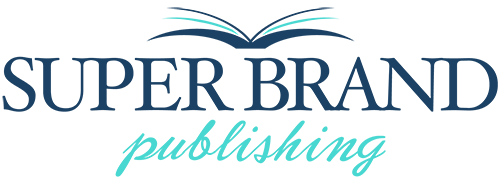


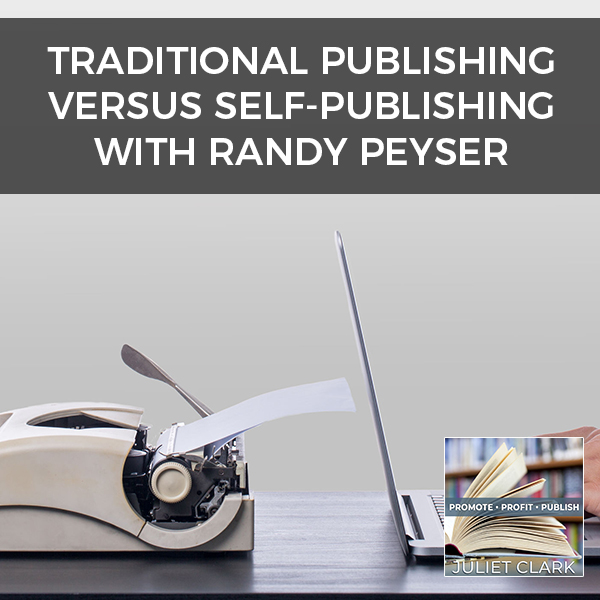
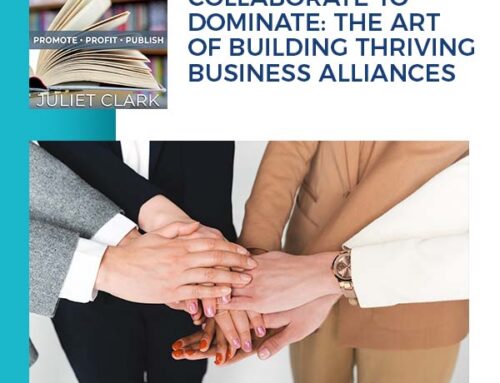
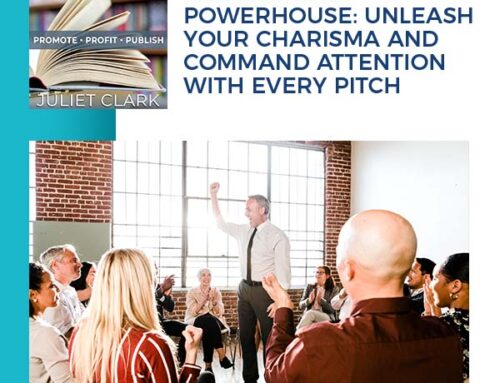
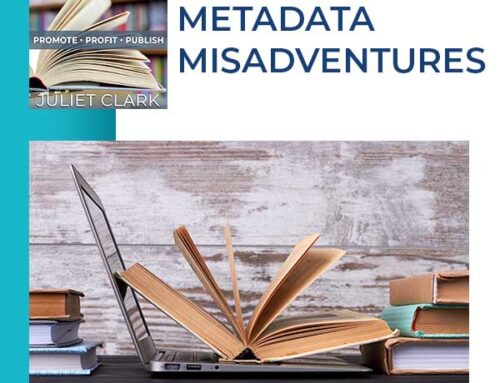
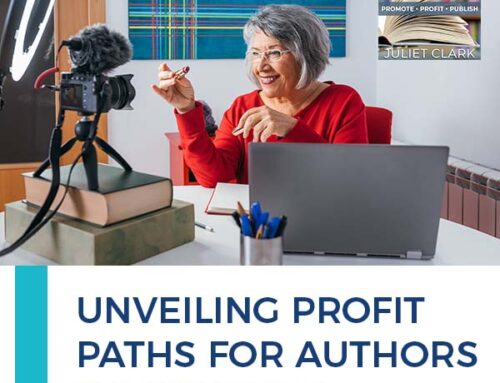
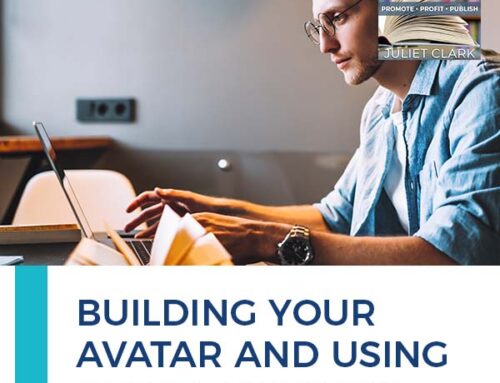
Leave A Comment